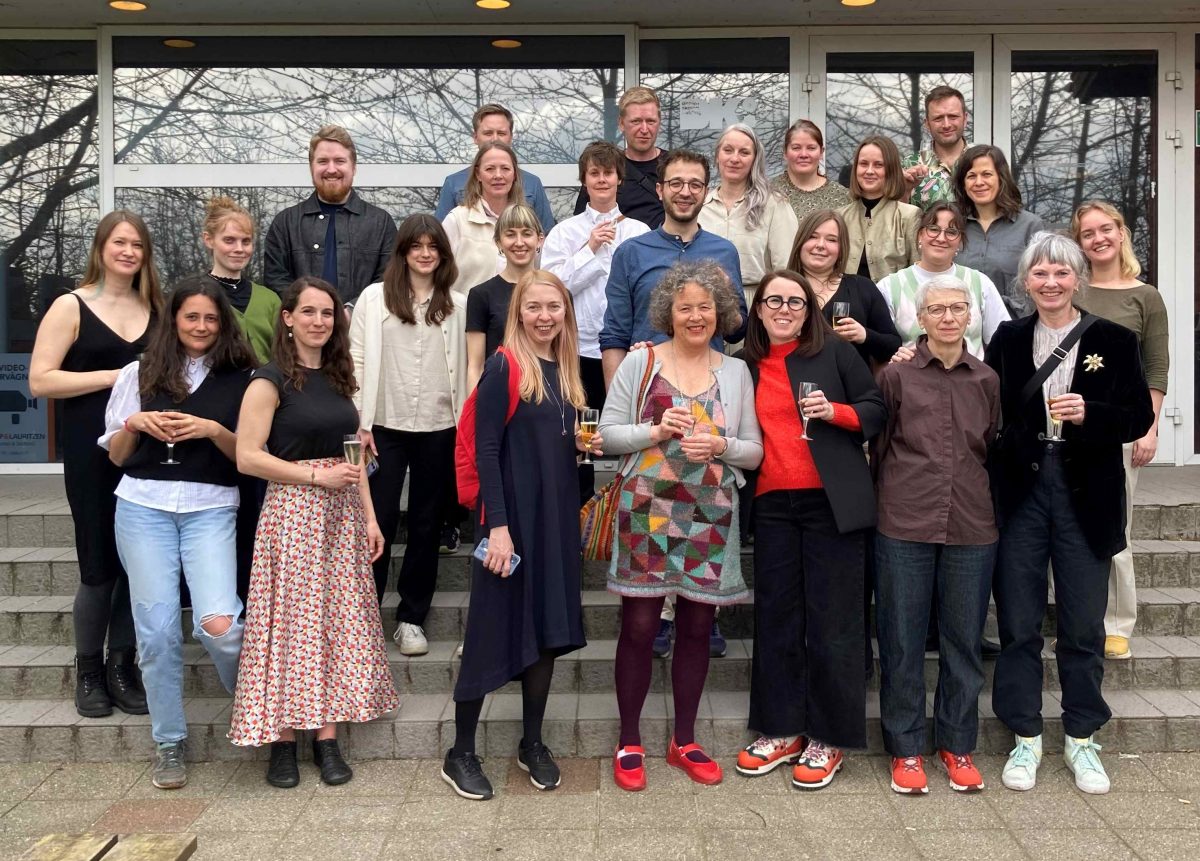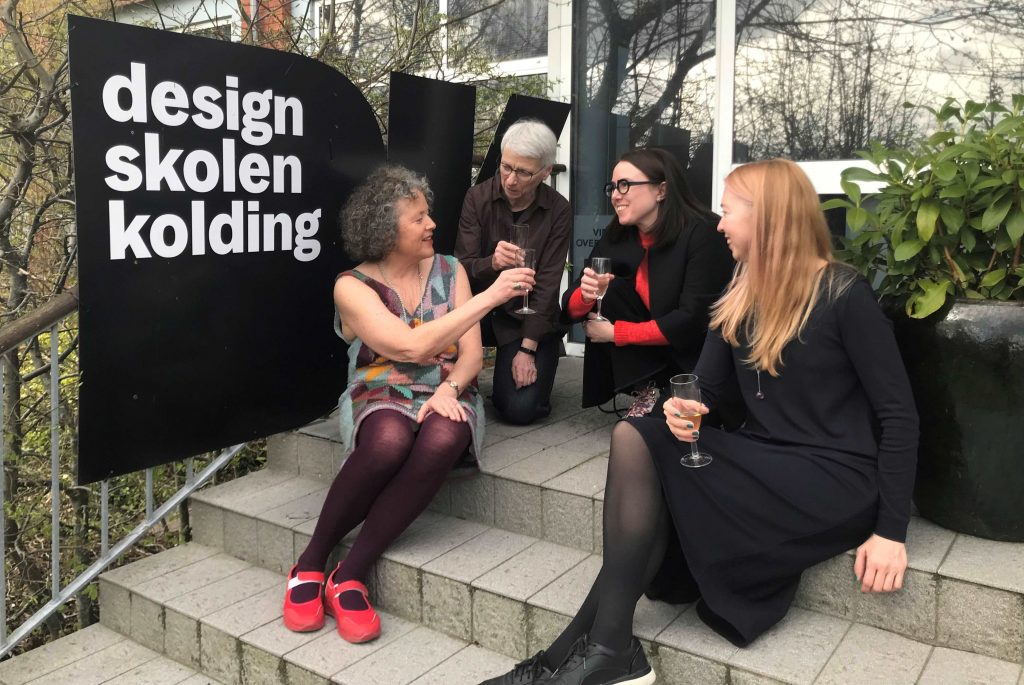A day worth marking for clothing research

April 8th, 2024, Iryna Kucher defended her PhD “Designing Engagements with Mending. An Exploration of Amateur Clothing Repair: Practices in Western and Post-Soviet contexts”.
Iryna was a guest lecturer at Consumption Research Norway SIFO a period as research fellow, she has used wardrobe studies as a method and Ingun was her first opponent. This was therefore not just an important day for Iryna, but also for the clothing researchers at SIFO – and clothing research in general.
Alongside Ingun in the assessment committee, was Senior Researcher Olga Gurova, Laurea University of Applied Sciences, Helsinki, Finland and Design School Kolding’s own emerita Vibeke Riisberg. The main supervisor had been Ulla Ræbild, and also Amy Twigger Holroyd, who followed online.
The thesis is a broad and deep dive into the culture of mending. By looking at the history of
clothing consumption in post-Soviet and in the Western world, it describes how different histories have formed ideologies of consumption and clothing repair practices in people’s everyday life. Iryna contributes with lifting the description on repair out of a mainly Western-centred perspective. She has used a variety of literature and sources in Russian, Italian and Nordic languages, so not only English, being so often the case. The thesis has surprisingly no research question, but instead does a deep dive into:
1) Understand how mending practices are conceptualised in Western and post-Soviet contexts.
2) Understand what kind of infrastructures, devices, and materials facilitate the enactment of mending practices.
3) Understand what competences are employed when mending practices are enacted and what contributes to successful clothing repair.

The methodology is original and rich, and brings design research, the social sciences and wardrobe studies together. Her wardrobe study has focused on what has been repaired – and what hasn’t been repaired – as much other research. An original contribution here is that this is not only done by the candidate’s main informants, but that together with their mothers or other older relatives, they did a similar exercise with the older generation. This gives the opportunity to look at the informants’ background and training and thus the relationship to repair over time. It is ambitious to draw in both comparisons in time and space. Iryna received a lot of praise for this during the defense, but also critical questions as she has gone to great lengths to summarize and simplify differences. After all, the history of repair is both invisible and full of holes, and it is easy to assert what are, strictly speaking, assumptions.
Contributions from the work that will probably be cited and develop further understanding are the concepts seamless, discreet and expressive approaches to clothing repair, instead of visible and invisible, which are more commonly used. Iryna’s point is that both invisible and expressive (what is often discussed under visible mending) require special expertise, while discreet is what most people try to achieve in private repairs – which is the vast majority.
It is also interesting how different groups do the same thing, e.g. repair for different reasons. «Post-Soviet ‘mothers’, who used to live in the Soviet repair society, which was characterised by scarcity, still associate mending with necessity. In contrast, Western ‘daughters’, who live in a time of eco-anxiety, associate mending with sustainability”. The quote shows how comparing across generations and consumer cultures (post-Soviet and Western) makes sense. Also interesting from a SIFO perspective is Iryna’s discussion of the importance of home economics – i.e. training in needlework and repair at school. This is an important part of her description of how the infrastructure around repair disappeared in both the Western and post-Soviet context. In order to rebuild repair, a build-up of this infrastructure is needed, which is not only a willingness to teach, but also workshops in schools, sewing machines, textbooks, etc.
Many had found their way to the design school’s premises – and others followed the event online. Iryna’s work is nuanced, particularly well-presented visually and exciting, as already stated, a big day for clothing research.